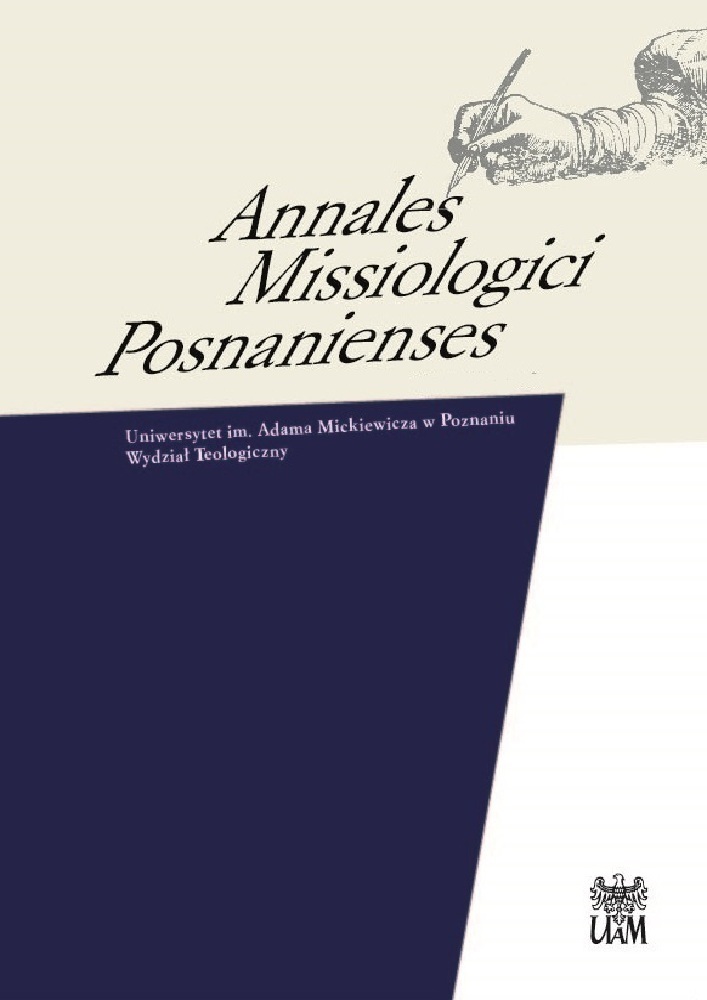Abstract
It was always important for the Church, that a communication between the preacher and the listener was the best; the former must be understood in such a way that the latter is moved by the words of the Gospel. Before the arrival of Europeans in Central Africa (in late nineteenth century), the Bemba people did not know any written form, and their language only had a spoken form. It was with the arrival of Europeans on the Bemba lands that the era of learning, writing, studying and classifying the language of this ethnic group began. The first Europeans to reach the Bemba area were the missionaries, the White Fathers, and it was they who, after beginning their missionary activity, began to study the Bemba language. This article presents the achievements of the White Fathers in this field and tries to explain how the process of learning the Bemba language by the White Fathers was carried out.
References
Corbeil, Jean Jacques. Mbusa. The sacred emblems. Ndola 1970.
Cox, Alfons. [Bemba Grammar]. Maszynopis – nr arch. FENZA (Lusaka. Zambia): 1-M-La 70.
Dupont, Joseph. Essai de grammar Bemba. St. Cloud, Paris: Imprimerie Belin Frares, 1900.
Grammatick Deutch-Cibemba, 1941, Maszynopis– nr arch. FENZA (Lusaka. Zambia): 1-M-La 21.
Guillerme, Luis. Dictionnaire Francais-Cibemba, precede d’un abrege de grammaire. Malines, 1920.
History of the Jesuits in Zambia. A Mission Becomes a Province. Red. Edward P. Murphy. Nairobi: Paulines Publications Africa, 2003.
Hoch, Ernst. Bemba Grammar with exercises. Ilondola: Language Center, 1967.
Hoch, Ernst. Bemba Grammar with exercises. Maszynopis – nr arch. FENZA (Lusaka. Zambia): 1-M-La 69.
Labrecque, Eduard. Grammaire. Maszynopis – nr arch. FENZA (Lusaka. Zambia): 1-M-La 16.
Luzbetak, Louis. Kościół a kultury. Nowe perspektywy antropologii misyjnej. Warszawa: Verbinum, 1998.
Oger, Louis. Bemba Worldview. A semantic approach. Maszynopis – nr arch. FENZA (Lusaka. Zambia): 10-Pa-La 10.
Oger, Louis. Notes on Bemba tonality. Ilondola: Language Center, 1963.
Oger, Louis. Verbs chart with examples. Ilondola: Language Center: 1-M-La 14.
Pineau, Henri. Grammaire Cibemba. Rękopis – nr arch. FENZA (Lusaka. Zambia): 1-M-La 19.
Schoeffer, Louis. A grammar of the Bemba Language as spoken in north-east Rhodesia. Oxford: The Clarendon Press, 1907.
Spitulnik, Debra. Kashoki, Mubanga. „Bemba”. W: Facts about the World’s Languages: An Encyclopedia of the World’s Major Languages, Past and Present. Red. Jane Garry, Carl Rubino. New York–Dublin: Hw Wilson Co, 2001. 81-85.
Van Sambeek, Jan. Suggestions for the orthography of the Bemba Language. Rękopis – nr arch. FENZA (Lusaka. Zambia): 1-M-La 22.
License
Copyright (c) 2021 Małgorzata Madej

This work is licensed under a Creative Commons Attribution-NonCommercial-NoDerivatives 4.0 International License.
PUBLISHED WORK ARE LICENSED UNDER A CREATIVE COMMONS:
Before 2006 all published texts are copyrighted.
Authors
Authors of texts accepted for publication in the journal Annales Missiologici Posnanienses are required to complete, sign and return to the editorial address an agreement to grant free license to works, with an obligation to grant CC sublicense.
According to the agreement, the authors of the texts published in the journal Annales Missiologici Posnanienses grant to Adam Mickiewicz University in Poznan a non-exclusive and royalty-free licencji Creative Commons Attribution-NonCommercial-NoDerivatives 4.0 International (CC BY-NC-ND 4.0) license and allow sublicensing under the same conditions.
The authors retain the rights to further freely dispose of the work.
Users
Interested internet users are entitled to use works published from 2021 onwards in Annales Missiologici Posnanienses under the following conditions:
- Attribution - the obligation to provide with the distributed work, information, about the authorship, title, source (links to the original work, DOI) and the license itself;
- Non-commercial use - you should not use the work for commercial purposes;
- Without creating derivative works - the work must be preserved in its original form, e.g. translations, adaptations may not be distributed without the author's permission.
Interested Internet users are entitled to use works published between 2006 and 2020 in Annales Missiologici Posnanienses under the following conditions:
- acknowledgment of authorship - the obligation to provide with the distributed work, information, about the authorship, title, source (links to the original work, DOI) and the license itself;
- without creating derivative works - the work must be preserved in its original form, e.g. translations, adaptations cannot be distributed without the author's consent.
Other
Adam Mickiewicz University of Poznan retains the right to the journal as a whole (layout, graphic form, title, cover design, logo, etc.).



